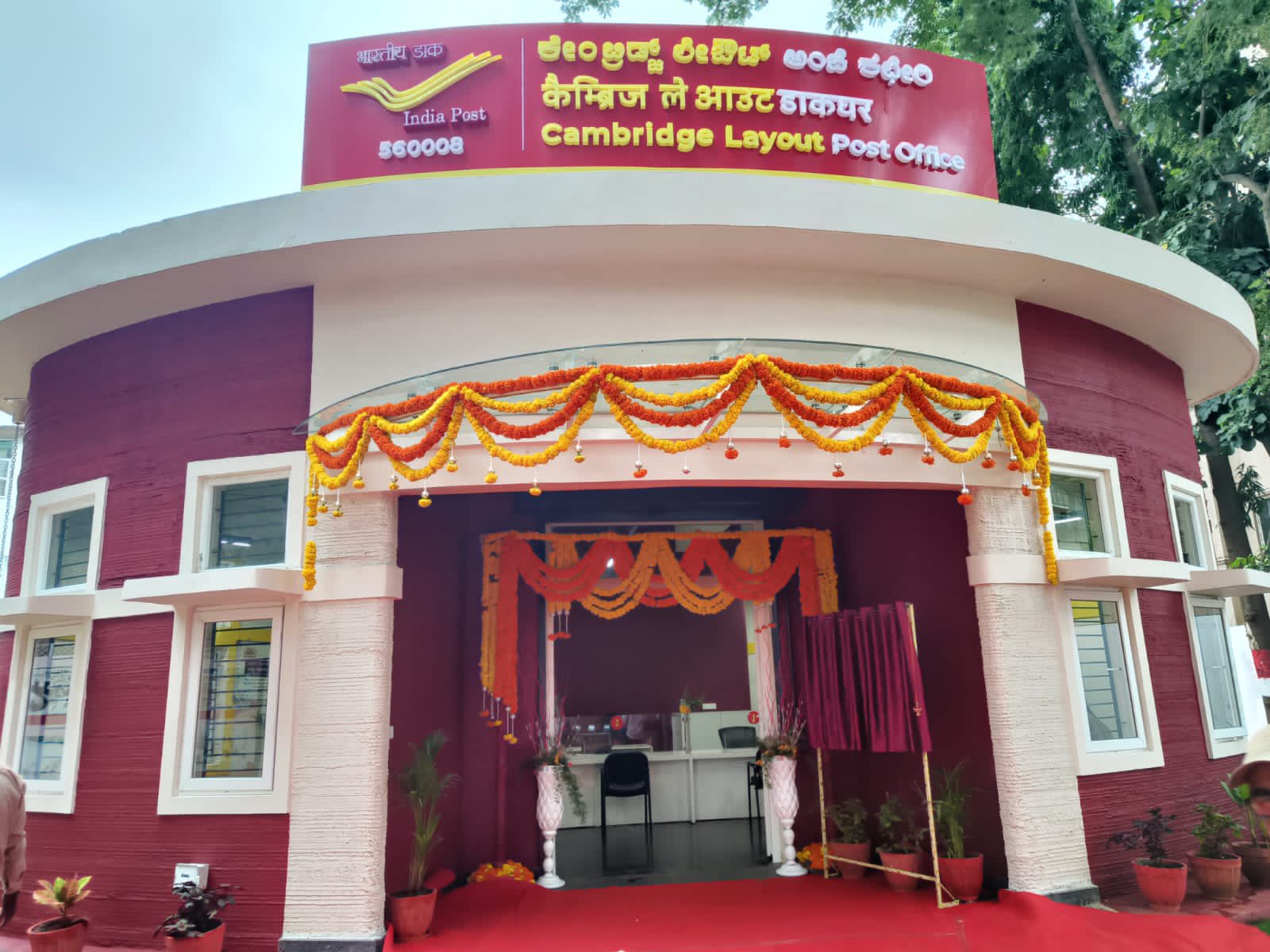Report by Paridhi Agarwal
On August 18, 2023, the Union Minister of Railways, Communications and Electronics & Information Technology inaugurated India’s first 3D printed post office building in Cambridge Layout near Ulsoor Bazaar, Bengaluru.
The building, spanning an area of 1100 square feet, has been built with 3D Concrete Printing Technology by Larsen and Toubro Construction in collaboration with IIT Madras, under the guidance of Professor Manu Santhanam.
The construction of the building involved using a robot to deposit concrete layers according to a pre-designed format and was completed in a period of 43 days.
About 3 D printing technology & its applications
3D printing, also known as Additive manufacturing, is the process of making a 3D object layer-by-layer using a digital file. 3D printing uses materials like thermoplastic, liquid metals, plastics, concrete, resin etc.
3D printing is being used in aviation to manufacture various things from food trays to new parts for replacements and in the medical field to construct organ models for pre-surgery planning. It is also used in dentistry to make models of the mouth and teeth and to create customised prosthetic limbs.
3D printing for construction
3D construction printing involves creating construction elements or entire buildings using a 3D printer. However, instead of using materials like plastics etc., liquid metals or concrete is used in the construction in this process. The process can be carried out both onsite and offsite. Robotic arms are the printers which are most used for construction as they allow more flexibility and freedom of movement. They are also capable of printing in various angles.
Some of the advantages of this technology include-
· Reduces time: The conventional method of laying bricks by hand takes more time than 3D printing a building layer by layer using a robot.
· Reduces wastage: Using 3D printing robots allows precise amounts of material to be used resulting in reduction of waste at the jobsite as there is no excess purchasing of materials.
· Design flexibility: 3D printing allows constructors to make last minute changes in the design of their buildings before the robot starts printing as it uses a digital computer file.
· Reduction of cost: 3D printing reduces cost of construction as compared to conventional methods and workers are not needed on the jobsite for as long as the usual method. 3D printed houses are also typically more affordable than normal houses.
Other 3D printed buildings in India
This building is not the only building to be constructed by 3D printing. Almost a year ago, IIT Guwahati had made a 3D printed sentry post (a place where a soldier is stationed to keep guard) for the Indian Army as part of an indigenous research and development program.
Back in 2021, India’s first 3D printed house had also been inaugurated in the campus of IIT Madras. This house was built by a startup founded by a postgraduate of IIT Madras known as Tvasta Manufacturing Solutions. The house, which has a built-up area of 600 square feet, has a bedroom, a living room, and a kitchen.
This video, shared by the minister, Shri Ashwini Vaishnaw, illustrates the 3D printing process.
The spirit of Aatmanirbhar Bharat!
— Ashwini Vaishnaw (@AshwiniVaishnaw) August 18, 2023
🇮🇳India’s first 3D printed Post Office.
📍Cambridge Layout, Bengaluru pic.twitter.com/57FQFQZZ1b
Image Credits: Tweeted by official account of Narendra Modi

